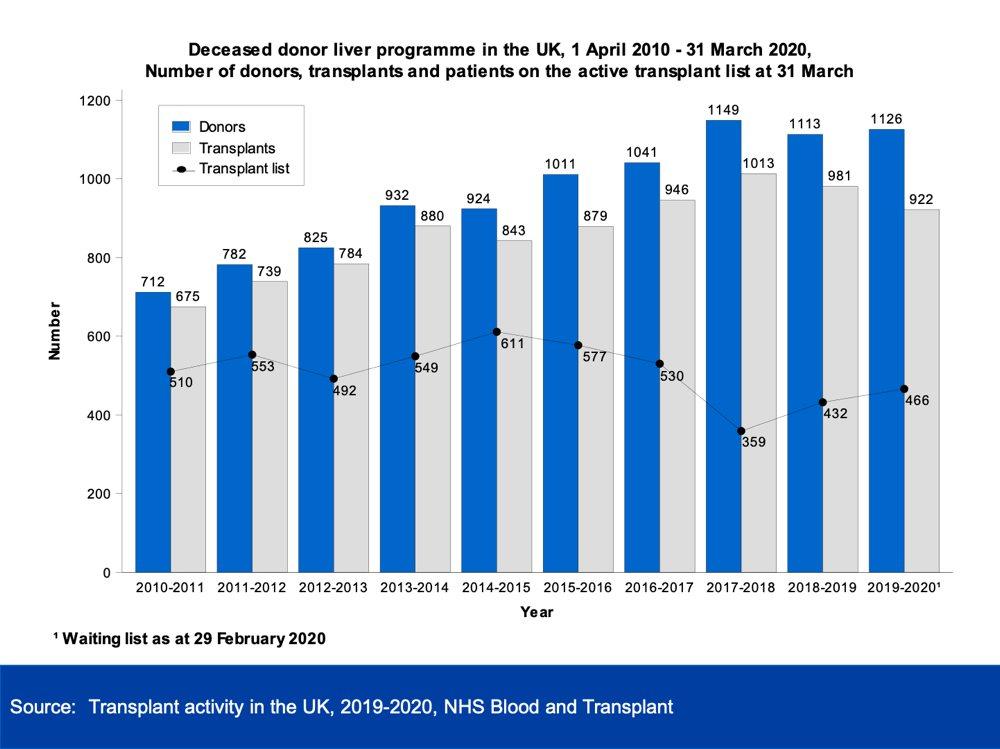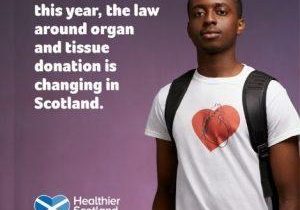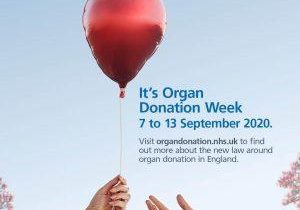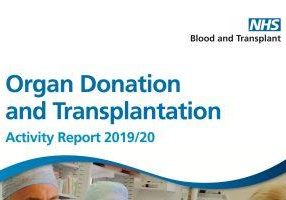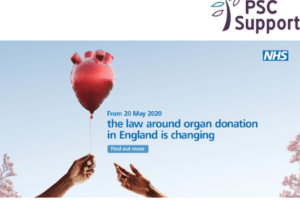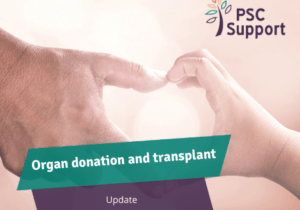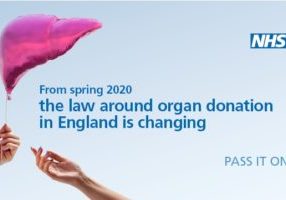Organ Donation and Transplantation Report Published
Hope for patients, despite COVID-19
Today, the annual Organ Donation and Transplantation Activity Report is published, highlighting transplant activity in the UK over the last year.
The COVID-19 pandemic has led to unprecedented challenges for UK transplantation. As a result, there were fewer transplants than usual in March, April and May 2020, with only the most urgent transplants going ahead.
NHSBT, the body responsible for transplantation in the UK, has been meeting frequently with key stakeholders to ensure the transplant service remains operational throughout the outbreak. Because of this, and the dedication of all transplant staff, transplant numbers have risen back up to expected levels for this time of year.
Professor Thorburn, Chair of the NHSBT Liver Advisory Group, is already preparing contingency plans to ensure as many patients as possible have access to transplantation services, regardless of where they live in the UK should we experience a second wave of COVID-19. These plans include having your transplant at a different transplant unit if an organ becomes available for you.
Organ donation activity
In March 2020 there was a sharp reduction in organ donation activity, which meant a 1% fall in the number of deceased donors over the financial year from 1,600 to 1,580. Sadly, the total number of patients, both adults and children, whose lives were potentially saved or improved by a deceased organ transplant also fell from 3,952 to 3,760.
The strong foundations built in organ donation and transplantation over the last decade ensured some donation and transplantation activity was able to continue even during the peak of the COVID-19 pandemic. Patient safety is paramount, and the most urgent transplants continued to be prioritised.
Even in the midst of the pandemic there were 91 deceased organ donors in the UK in March 2020. And impressively, during the health crisis the consent rate was even higher at 74.5% (March 2020).
Liver transplant activity
The chart below shows the number of liver donors, the number of transplants that took place and the number of people waiting for a liver transplant over the last decade in the UK.
Fewer liver transplants
The annual Organ Donation and Transplantation Activity Report shows deceased organ donor figures were on course to surpass the previous year’s total, but unfortunately the global COVID-19 pandemic hit in March and had a wide-reaching impact across the whole NHS and every aspect of UK society.
Many patients were temporarily suspended from the active transplant list as transplant centres reacted to the COVID-19 pandemic in March 2020.
There were 59 fewer deceased donor liver transplants in 2019-2020 than in the previous year (981 to 922 transplants)
Liver transplants from donors after circulatory death fell by 10% to 170 compared with the previous year
Liver transplants from donors after brain death fell by 5% to 752 compared with the previous year
Donor after circulatory death (DCD)
This means the transplant was performed using the liver donated after cardiac death
Donor after brain death (DBD)
This means the transplant was performed using the liver from an individual whose heart was still beating, but brain had ceased to function.
More patients on the waiting list
Over this last decade, there has been a decrease in the number of patients registered on the active liver transplant list, although this number has increased in recent years.
In order to make a sensible comparison, this year's waiting list figures use 29 February 2020 (ie before the COVID-19 pandemic) as a more representative date for the number of patients on the active liver transplant list at year end this year.
For numbers of patients active on the liver waiting list at the different transplant units, and the number of transplants performed, see page 80 of the report. Remember that each transplant unit serves varying numbers of patients overall.
There were 466 patients on the active liver transplant list at 29 February 2020, an increase of 34 (8%) from 31 March 2019
More organ donors
The high number of organ donors last year, on track to be another record, is testament to the strong support for organ donation in the UK and was possible thanks to more incredible families agreeing to support donation.
The numbers of families who gave their 'consent' ('authorisation' in Scotland) for organ donation to go ahead across the UK rose from 67% to 68% this year.
Of the 1,580 organ donors, 1,126 (71%) donated their liver and 891 (79%) of these donated livers were used.
There were 13 more deceased liver donors (1,126), representing a 1% increase on last year's figures
The number of liver donors after brain death fell by 1% to 848
The number of liver donors after circulatory death increased by 8% to 278
Other Organ Donation News
Organ Donation Week 2023
Monday 18th September marks the beginning of Organ Donation Week 2023. This year’s campaign hopes to see at least 25,000 people register to become organ donors for the first time.
Read MoreNHSBT and BTS Organ Transplantation Patient Information Website
NHS Blood & Transplant, in partnership with the British
Transplantation Society, have launched a new patient information website for organ transplantation.
Organ Donation Law in Scotland Changes
Scotland is moving to an opt-out system for organ and tissue donation from 26 March.
Read MoreOrgan Donation Week 2020
Make your organ donation decision and encourage others to do the same this Organ Donation Week.
Read MoreOrgan Donation and Transplantation Report Published
The latest organ donation and transplant activity report published today
Read MoreMy Life, My Heart Documentary
CBBC have produced a documentary called My Life, My Heart, which follows the story of Jack, now aged 13, while he waited for and eventually received a heart transplant.
Read MoreNHS Organ Donor Register Reaches 25-Year Milestone
As NHS Organ Donor Register reaches its 25th anniversary, there are now nearly 25 million people on the NHS Organ Donor Register and more than 20,000 lives have potentially been saved or transformed thanks to its introduction.
Read More
